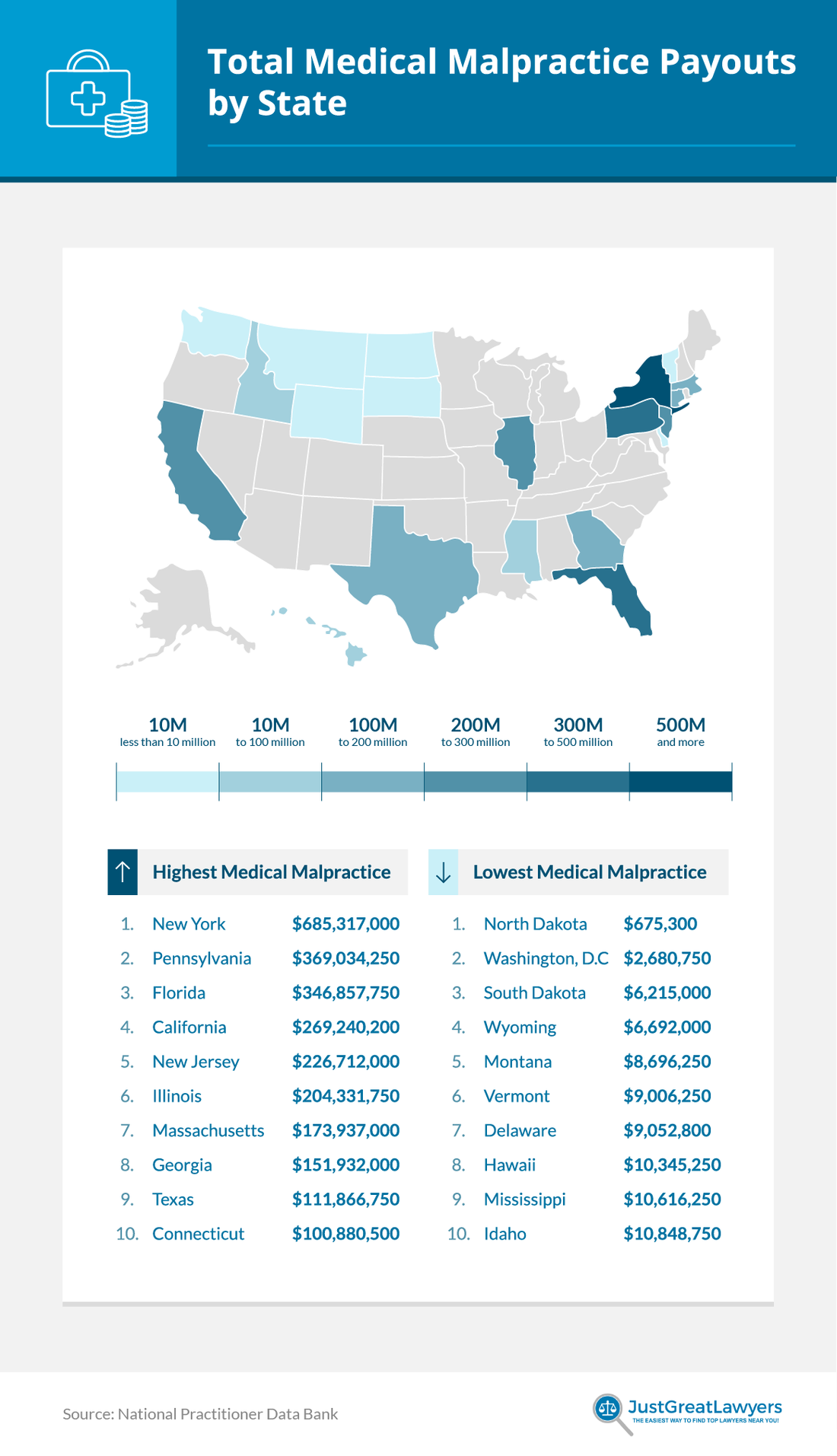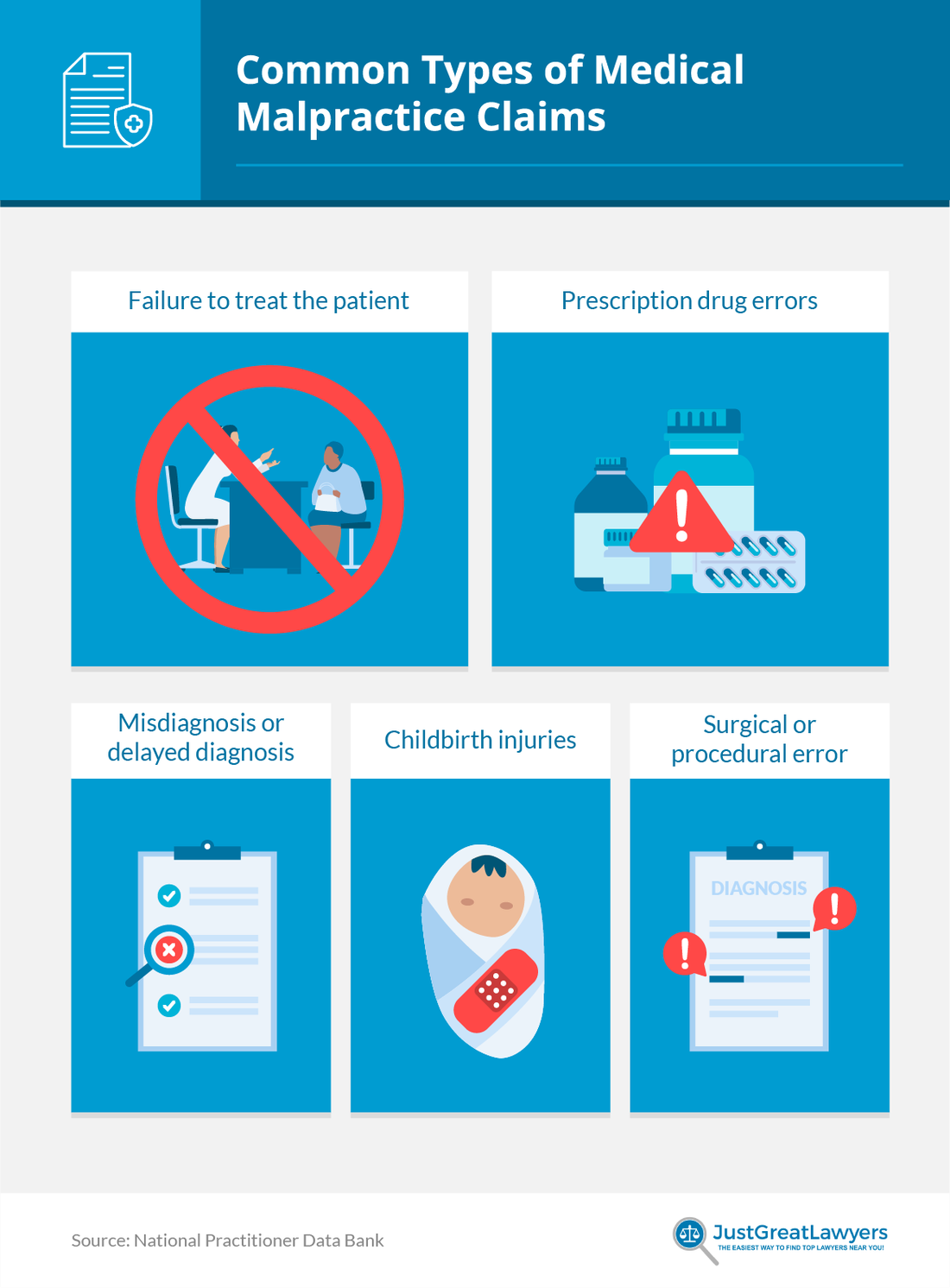
In the healthcare field, there are many medical malpractice lawsuits and errors, and it is not cheap. Medical malpractice is costly to physicians, insurers, and patients.
Just getting insurance for medical malpractice costs health care providers an average of $7,500 a year, and surgeons pay between $30,000 and $40,000 a year. In addition to physicians and surgeons, dentists, nurses, nurse practitioners, anesthesiologists, and psychiatrists also need malpractice insurance.
Insurance costs are so high because medical malpractice payouts are so expensive: They can often be in the six figures.
Medical malpractice is when a health care provider or medical professional injures a patient through either negligence or making an error regarding a surgery, treatment, or diagnosis. Malpractice occurs if two factors are present: if a patient is injured, and if that injury occurs because a health care provider has violated a professional standard of care.
To prove malpractice in a court of law, it must be established that the provider owed a duty to a patient, that the provider breached that duty, that an injury was caused by doing so, and that damages are appropriate.
Malpractice can occur if a patient is injured in surgery, by anesthesia, by being let go from the hospital too early, as a result of getting the wrong prescription or having drugs overprescribed, or through misdiagnosis.
State | Total Payouts | Per Capita | Average Payments |
New York | $685,317,000 | $35.07 | $446,461 |
Pennsylvania | $369,034,250 | $28.81 | $405,978 |
Florida | $346,857,750 | $16.28 | $268,466 |
California | $269,240,200 | $6.81 | $218,894 |
New Jersey | $226,712,000 | $25.45 | $359,860 |
Illinois | $204,331,750 | $16.04 | $588,852 |
Massachusetts | $173,937,000 | $25.20 | $692,976 |
Georgia | $151,932,000 | $14.44 | $425,580 |
Texas | $111,866,750 | $3.90 | $201,926 |
Connecticut | $100,880,500 | $28.24 | $672,537 |
Ohio | $88,052,750 | $7.53 | $391,346 |
Arizona | $83,789,250 | $11.68 | $372,397 |
Maryland | $72,626,250 | $12.02 | $370,542 |
Louisiana | $70,363,300 | $15.10 | $234,544 |
Michigan | $68,613,000 | $6.86 | $228,710 |
Virginia | $68,540,000 | $8.05 | $496,667 |
Washington | $55,064,050 | $7.31 | $307,620 |
Kentucky | $53,393,500 | $11.95 | $346,711 |
Missouri | $52,437,500 | $8.56 | $292,947 |
North Carolina | $50,286,050 | $4.84 | $356,639 |
Indiana | $49,858,950 | $7.45 | $205,181 |
Colorado | $47,307,600 | $8.31 | $363,905 |
South Carolina | $46,225,250 | $9.09 | $238,274 |
Tennessee | $43,254,300 | $6.39 | $325,220 |
Alabama | $41,913,500 | $8.58 | $616,375 |
Oregon | $40,185,250 | $9.59 | $368,672 |
Minnesota | $39,211,800 | $6.99 | $653,530 |
West Virginia | $37,924,000 | $21.00 | $338,607 |
Oklahoma | $33,137,750 | $8.40 | $223,904 |
New Mexico | $30,312,750 | $14.47 | $273,088 |
Nevada | $29,759,050 | $9.81 | $381,526 |
Maine | $28,805,000 | $21.52 | $872,879 |
Iowa | $27,901,000 | $8.84 | $303,272 |
Kansas | $25,735,500 | $8.84 | 178,719 |
Utah | $22,436,000 | $7.10 | $291,377 |
Wisconsin | $21,949,250 | $3.78 | $510,448 |
New Hampshire | $21,404,750 | $15.78 | $419,701 |
Rhode Island | $18,584,500 | $17.58 | $371,690 |
Nebraska | $17,824,500 | $9.24 | $336,311 |
Arkansas | $16,368,550 | $5.43 | $240,714 |
Alaska | $13,785,000 | $18.69 | $656,429 |
Idaho | $10,848,750 | $6.18 | $339,023 |
Mississippi | $10,616,250 | $3.55 | $153,859 |
Hawaii | $10,345,250 | $7.28 | $333,718 |
Delaware | $9,052,800 | $9.36 | $348,185 |
Vermont | $9,006,250 | $14.38 | $391,576 |
Montana | $8,696,250 | $8.19 | $197,642 |
Wyoming | $6,692,000 | $11.58 | $371,778 |
South Dakota | $6,215,000 | $7.04 | $414,333 |
Washington D.C. | $2,680,750 | $3.82 | $243,705 |
North Dakota | $675,300 | $.89 | $135,062 |
Source: LeverageRX
The state of New York had by far the highest payout total of any state, at more than $685 million in malpractice payments in 2018. New York also ranked highest in terms of the number of payouts at 1,535. That’s an average payment of $446,461.
New York has consistently had the highest medical malpractice costs and generated a large number of reports. The state saw more than 62,000 medical malpractice reports from 1990 to 2021, which is more than California’s roughly 53,000, even though the Golden State has a population twice its size. (Wisconsin had the fewest reports over that span at 3,576.)
Those states were followed by Ohio, Arizona, Maryland, Louisiana, and Michigan.
Because these are gross figures, rather than per capita totals, it’s no accident that these states all have substantial populations. The amounts for average payments tell a slightly different story:
New York’s average of more than $446,000 actually ranks behind lower-population states such as Virginia, Minnesota, Alabama, Alaska, and Maine. Alaska, for instance, has an average payout of more than $656,000, even though its total is a small fraction of New York’s at less than $14 million (and just 21 payouts compared to more than 1,500 in the Empire State).
In Maine, the average amount of money paid out in medical malpractice suits is even higher at $872,879, but with just 33 payouts for a total of less than $29 million.

10 States With the Lowest Medical Malpractice Payouts
Next-highest on the list from the bottom were Alaska, Arkansas, Nebraska, Rhode Island, and New Hampshire.
North Dakota also had the fewest payouts with just five and the lowest average at $135,600. Just three other states had averages of less than $200,000 (Mississippi at just under $154,000, Kansas at slightly less than $179,000, and Montana at more than $197,000).
After North Dakota, the fewest payments were 11 in Washington, D.C., 15 in South Dakota, and 18 in Wyoming.
The American Medical Association (AMA) reported in 2016 that 34% of all physicians said they’d been sued during their careers over medical malpractice, while 16.8% said they’d been sued more than once. Nearly half, or 49.2% of doctors 55 and older reported having been sued, while 39.4% of men did.
But which specialists are most likely to be named in malpractice claims?
According to a recent Medscape study, surgeons and urologists topped the list of those named in medical malpractice suits. In each of these disciplines, more than 4 in 5 physicians reported being sued. And the percentage was similar for otolaryngologists (ear, nose, and throat doctors) and OBGYNs/women’s health specialists.
Surgeons 85%
Urologists 84%
Otolaryngologists 83%
OBGYNs/women’s health specialists 83%
Radiologists 76%
Emergency medicine specialists 76%
Cardiologists 65%
Gastroenterologists 63%
Anesthesiologists 62%

Medical errors involving a diagnosis, such as failure to diagnose a condition properly or delaying diagnosis, are by far the leading impetus for medical malpractice claims. According to Medscape’s 2019 survey, more than 4 in 10 of those named in a lawsuit said this was the reason they had been sued. Here are the five most common claims according to that survey:
Wrongful death 18%
Complications from treatment/surgery 15%
Another survey, conducted by Coverys, covered claims made from 2013 to 2017 and classified claims a little differently. Diagnostic-related claims, however, were still the biggest category. The top five types of claims were:
Diagnostic-related 33%
Surgical/procedural 24%
Medical management 14%
Medication-related 9%
Patient environment/safety 4%
In medical malpractice lawsuits, plaintiffs can cite personal injury as economic damages, non-economic damages, and punitive damages.
In a case of misdiagnosis, a physician fails to recognize and diagnose a condition. This leads to delayed or incorrect treatment — or no treatment at all. This can lead to a health condition remaining untreated, leaving the patient to suffer for an extended period or, in some cases, allowing the condition to progress.
Diagnostic problems are most common in cases of cancer (particularly breast, prostate, and skin cancer), stroke, and sepsis. Other conditions that are most often wrongly diagnosed include heart disease, lung and leg blood clots, meningitis, and pneumonia. Diagnostic errors that most often lead to death or permanent disability involve cancer at 37.8%, vascular events at 22.8%, and infections at 13.5%.
In the Coverys survey, 36% of diagnosis-related claims resulted in a patient’s death, and the same percentage occurred in outpatient cases. More than half (52%) were related to errors in lab testing, and one-third (33%) were the result of doctors failing to evaluate, including obtaining the patient’s family history.
Another cause of medical malpractice cases is medical negligence in the form of a failure to treat or monitor a patient. This can stem from lack of insurance, failure to order/conduct medical tests, or not referring the patient to a specialist.
Prescriptions are one of the most common components of medical treatment: According to the Mayo Clinic, nearly 7 in 10 Americans are on at least one prescription and half are on two or more.
Prescription drug errors can involve giving the wrong medication to a patient, prescribing an improper dose, and failing to take into account allergies, contraindications, inappropriate duration of treatment, and potential interactions with other medications the patient is taking.
More drug errors — almost half — take place during the prescribing and ordering stage than at any other time, with others happening when prescriptions are transcribed, dispensed, administered, and monitored.
The consequences: Drug errors lead to between 7,000 and 9,000 deaths each year in the United States, affecting more than 7 million patients in all, with a total monetary cost of more than $40 billion.
Physicians perform more than 200 million surgical procedures around the world each year, and at least 4,000 errors occur in the United States annually. The cost in terms of malpractice payouts tops $1.3 billion a year.
Surgical malpractice can stem from things such as unnecessary surgery, operating on the wrong part of the body, leaving foreign objects inside the surgical site, and infections caused as a result of surgery.
Surgical errors result in death 6.6% of the time, permanent injury in one-third (33%) of cases, and temporary injury 59% of the time. They were most common in patients ages 40 to 49. Whereas errors in diagnosis account for 34.1% of payout amounts in malpractice cases, surgery ranks second at 21.4%. The results of surgical and procedural errors can include brain damage, organ damage, and infection.
Injuries during childbirth to the mother or child can be the result of medical malpractice. Causes of injury can include some of the same issues already discussed, including improper diagnosis, improper aftercare, failure to order the proper tests, and errors in prescribing medication.
Other, more specific problems can include failure to perform a C-section, the improper use of forceps, and pulling too hard on the baby’s head, shoulders, or arms.
Taking legal action in a medical malpractice case is a big step. Doing so can be expensive, as pursuing a claim can involve many hours of legal work that requires research as well as taking medical experts’ depositions and testimony.
To find out where you stand, you can reach out to a law firm for a free consultation. A medical malpractice attorney can give you a good idea about the merits of your case, how best to proceed, and your chances of success.
